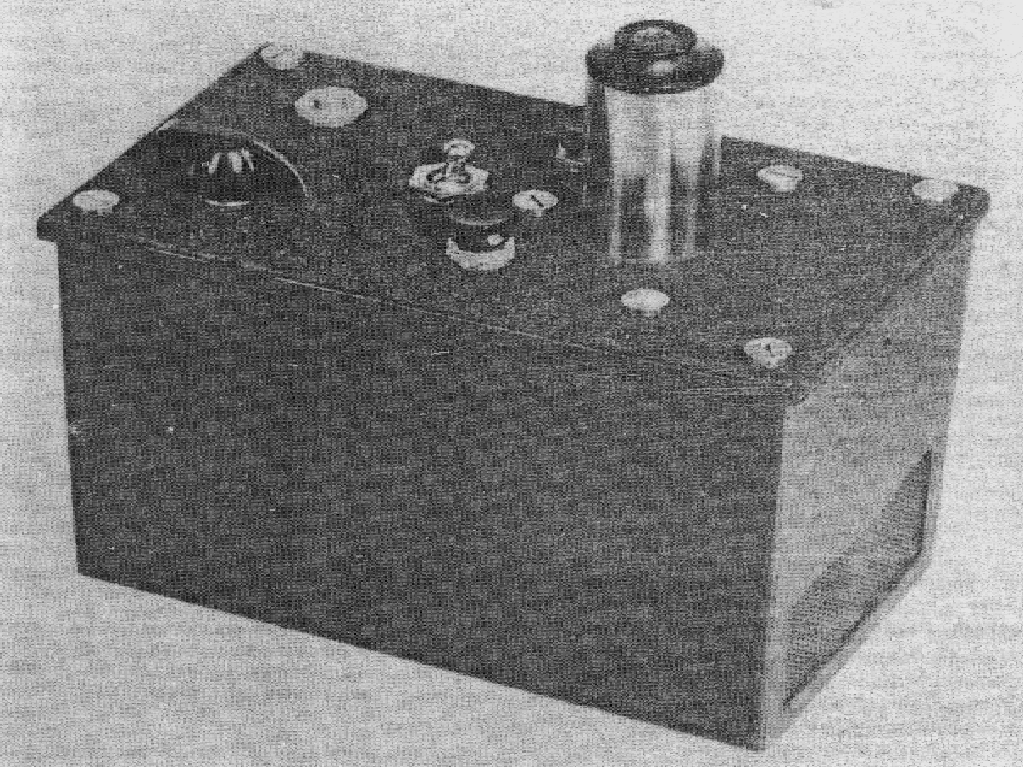
Metallurgical Laboratory (MET Lab)
The Metallurgical Laboratory (MET Lab) at the University of Chicago was the cover name for the Manhattan Project at the University of Chicago which developed several radiation measuring instruments in the mid 1940s. The Met Lab became part of the Manhattan Project in May 1943. Col. Warren was responsible for health effects of the Manhattan Project and Dr. R. S. Stone was the health expert at the Met Lab. The Metallurgical Project later became known as the Plutonium Project. On December 2, 1942, the atomic age was born at the Met Lab with the first self-maintained nuclear chain reaction. The initial objective of the Met Lab was to develop a chain reacting pile using natural uranium, separate plutonium chemically, and obtain theoretical and experimental data for effecting an explosive chain reaction. Later a pilot plant was conducted at Oak Ridge and then large productions units at Hanford.
It was recognized early on that their would be significant radiation hazards associated with the so-called Plutonium Projects. Therefore, Dr. E.O. Wollan was called to head the first Health Physics Department in 1942 and radiologist Dr. R. S. Stone was Associate Project Director for Health of the Plutonium Projects. It was later run by J. E. Rose in 1944.
They were established to produce over 100 of the redesigned Lauritsen Electromer's. The Lauritsen Electrocope was designed as early as 1937 by C.C. Lauritsen and T. Lauritsen. The instrument section was initially run by Volne Wilson, then William Jesse in 1943 and Francis Shonka in 1944. Ralph Lapp was the Assistant Lab Director of the Met Lab in 1945 and later part of the AEC. Nancy Wood was part of the counter tube group and later founded N. Wood Laboratories, a commercial maker of detector tubes.
Ernie Wakefield was also in the counter group and later founded Radiation Counter Laboratories of the Wakefield Industries. Wendell Bradley was head of the electronics group and later left to form Nuclear Measurements Corporation. Also in the group were Jim Schoke, John Kuranz and Tom Mitchell, who left to form the Instrument Development Laboratory (IDL) with a symbol of an "integral sign with stars for the limits" which stood for "between the limits of mechanics and electronics. IDL later became Nuclear Chicago.
Dr. Ole G. Landsverk, founder of the Landsverk Electrometer Company, developed the quartz fiber dosimeter at the Met Lab in 1944. The instrument was a beta-gamma survey meter. It had a microscope field that could be illuminated for observation through a viewing scope. It had ranges from 0-100 mR/h and 50-1,000 mR/h.
He later worked with E. O. Wollan to develop the L and W electroscope. Landsverk built the electrometer used in Nagasaki in the late 1940s.
Landsverk and Wollan worked at Argonne National Laboratory in 1944. They developed several survey instruments including a gamma-beta survey meter. The meter is 3.25 x 6 x 5.25 in a metal case. The electrometer assembly is attached to the microscope tube inside an aquadag coated bakelite chamber. It has a 1.75 x 3 aluminum window for beta radiation.

Landsverk Beta Gamma Survey Meter 1944
The Laboratory type gamma meter was designed for calibrating radium sources. It has a longer chamber than the survey meter for increased sensitivity. It has a standard 10 power microscope and 15 power eyepiece for sharper fiber imaging and light for viewing.
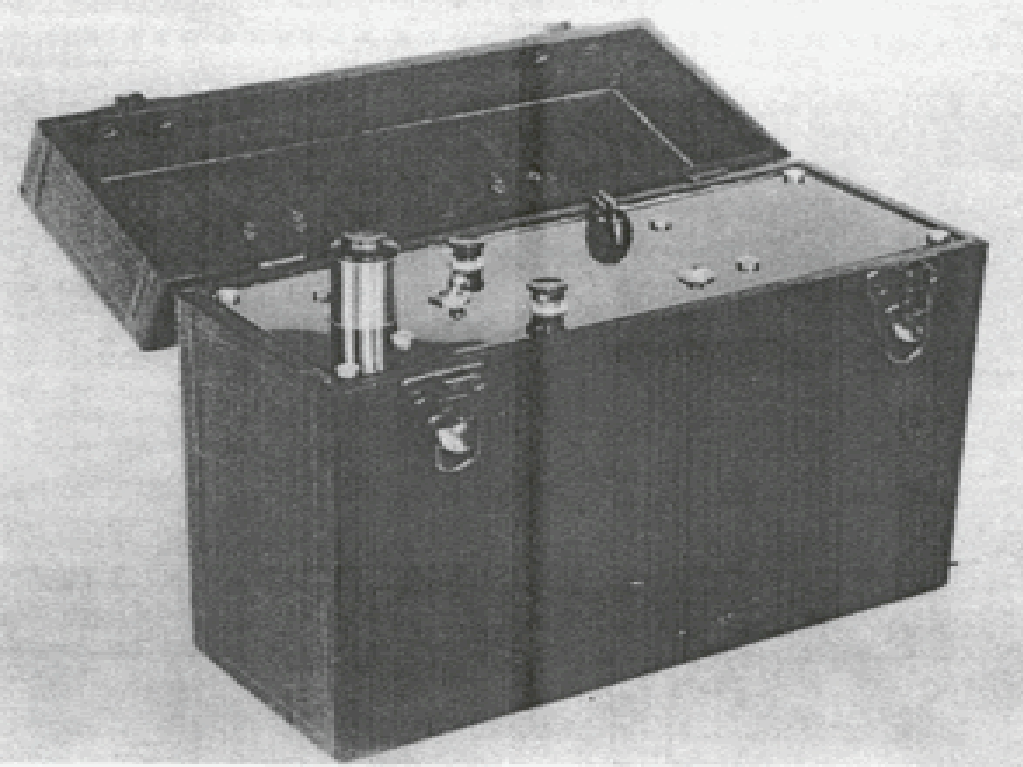
Landsverk Lab Type Survey Meter 1944
A survey meter for alpha, beta, gamma fast and slow neutrons was developed in 1946 by Landsverk. It had a two piece telescoping aluminum case which was 3.5 x 5.5 x 2.75 and weighed 2.5 lbs. It could house four ionization chambers. The unit came in a wooden case which was 14 x 9 x 4.5 with a total weight of 7 lbs. It uses six 22.5 volts batteries. The gamma chamber is a 3 diameter x 4 long bakelite tubing. The end of the chamber has a circular diaphragm. The alpha chamber is a shallow chamber with a two inch diameter phosphor bronze plate collecting anode. It has a nylon screen covering the end of the chamber to allow entering of alphas. The slow neutron chamber is 1.5 diameter x 1.75 long. It weighs 2.25 lbs. It has two concentric aluminum cylinders coated with boron. The fast neutron chamber is a hydrogen pressure chamber. The chamber is 6 long x 1.75 diameter.
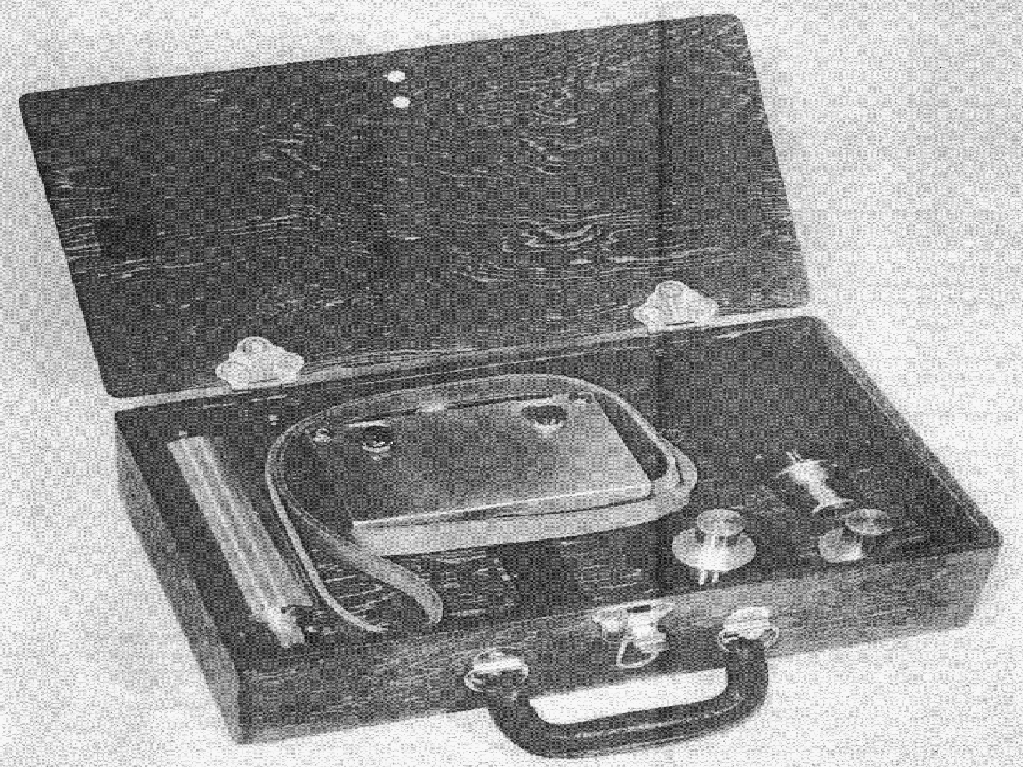
Landsverk Survey Meter 1946
Dr. Ernie Wollen later joined the Oak Ridge National Laboratory X-10 Division. Later, Dr. Landsverk established the dosimeter department at Kelley-Koett in Cincinnati. The company later became the Cincinnati Division of Bendix and later Dosimeter Corporation of America. Early units had ranges of 200 and 2,000 mR/h.
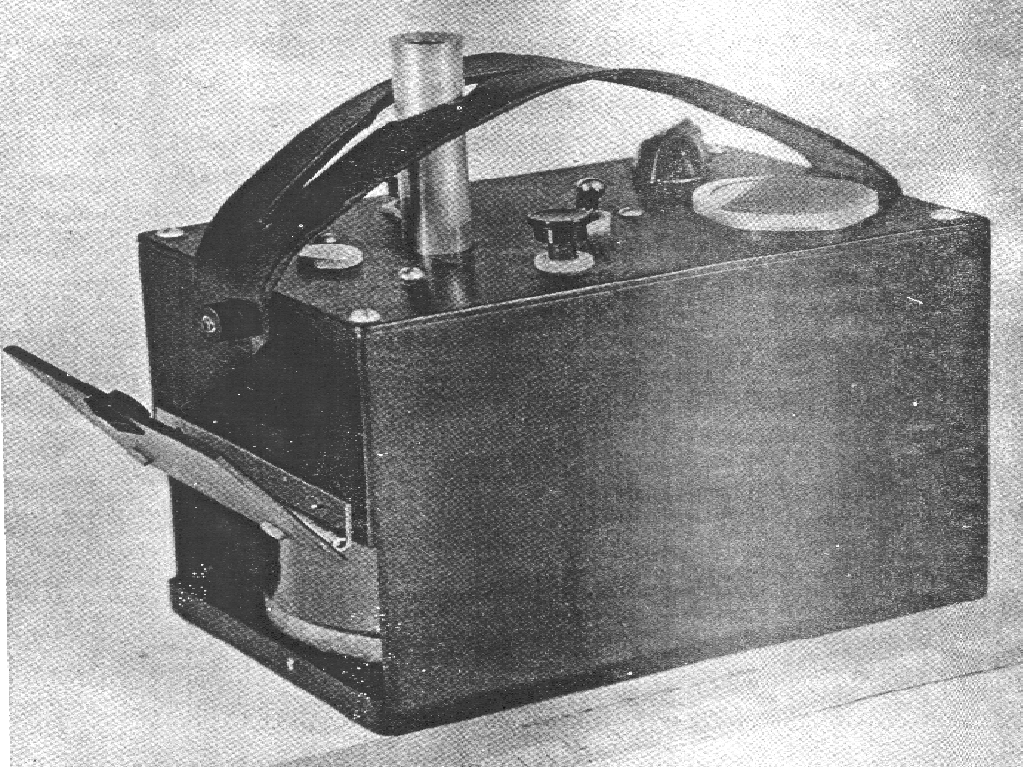
Landsverk Electrometer 1946

Landsverk Electrometer 1947
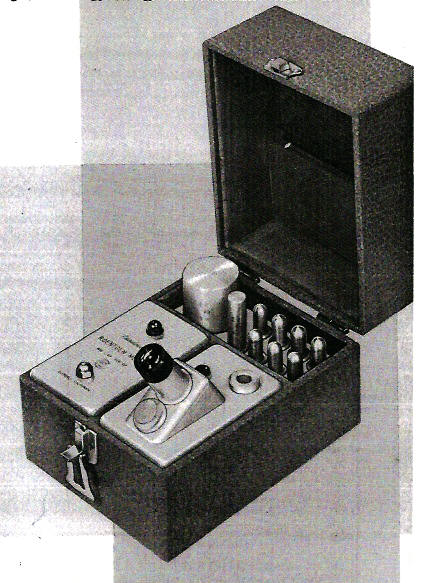
Landsverk Model L-64 1960
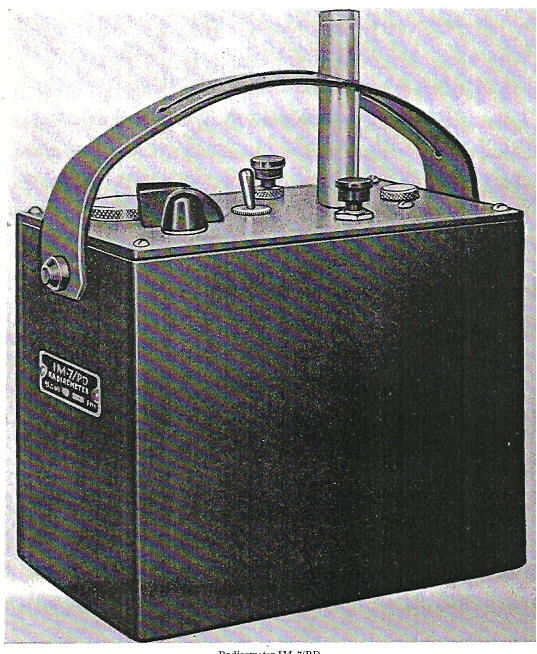
Landsverk Model L-100 1948
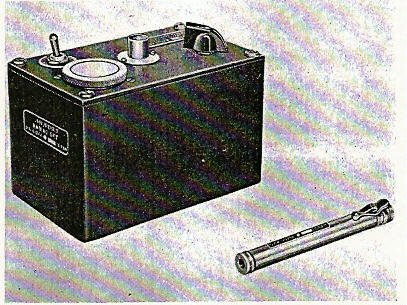
Landsverk Model L-200 1948
An improved version of the Lauritsen electroscope was developed by L & W Electroscope (Landsverk and Wollan). It had a range of 200 and 2,000 mR/h. It could detect beta and gamma. The unit was 6.5 x 3.75 x 8 and weighed 5 lbs. The ion chamber was 3 diameter x1.5 long.
The Zeus was also developed at the Met Lab by Francis R. Shonka and W.P. Jesse in 1943. The Zeus was named by a physicist with a classical education.
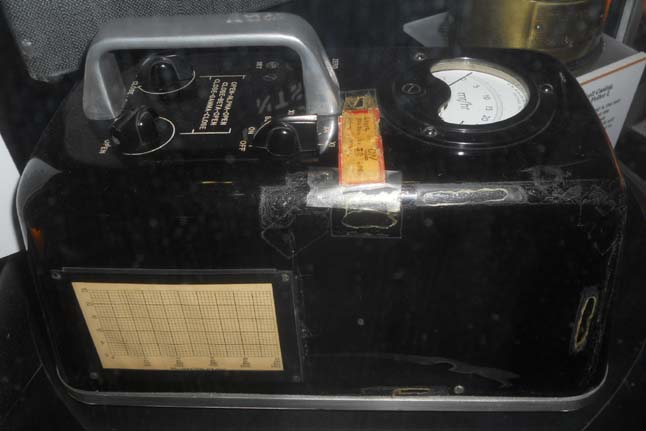
Zeus Detector 1943-1945 from the Dr. Herbert M. Clark Collection, Smithsonian National Museum of American History on display at the National Atomic Testing Museum, Las Vegas, Nevada
Jesse reported in 1946 a story about uranium prospecting The Geiger-Muller counter has proved itself of great use in locating outcroppings of uranium ore by means of the gamma-rays emitted and also in making assays of sample specimens picked up by the prospecting party in the field. During the early part of the war, this then comparatively new method was tried by one of our geological parties. The Geiger-Muller set then available weighed about 40 lbs. Apparently these geologists were equally skilled as psychologists, since they took along a physicist to operate the instrument. After the perspiring physicist had carried for days the 40 lb. set over windfalls, through swamps and up steel hills, he returned to his laboratory with the unquenchable resolve to build a much lighter set. Through his efforts and those of other physicists following him, a set is now available weighing less than 2 lbs.
It was also reported by Edgar J. Murphy that years of research and development work had to be done before these rare old gadgets became everyday necessities". He also quoted Churchills famous remarks regarding gallant members of the Royal Air Force, that it is quite true that a lot of us owe so much to so few.
The Zeus superseded the Clinton Laboratories Paint Pail from 1945. Jesse developed two survey instrument models in 1945 the Mark 1, Model 10 and the Mark 1, Model 21A. The Zeus was a replacement for the Beckman Portable Survey meter also developed in 1945. It was later commercialized as the Rauland Model 100 as early as 1946. The name is after the chief god in Greek mythology. The unit had an ionization chamber and a sliding thin aluminum or plastic shield over the 5 x 6 detector window located on the bottom of the unit. It had a range from 1-2500 mR/h in ranges from 1-25, 5-100 and 100-2500.
In 1945, there were three versions of the Zeus. The Zeus 1 (Mark 1, Model 20) was an alpha, beta and gamma portable survey meter with ranges of 2,500 and 25,000 mR/h. It weighed 7.5 lbs. The Zeus 2 (Mark 1, Model 21) was the same a the Model 20 but with a longer battery life. It weighed 8.6 lbs.
The Zeus 3 (Mark 1, Model 21-A) was the same as the Model 21 but had a molded tenite case. It was used for alpha, beta and gamma survey work for health physics applications. The unit was developed in 1945 by W. P. Jesse. The unit has an ionization chamber with an area of 150 sq cm covered with a copper screen. It can measure up to 25 mR/h or 40,000 cpm. It has three ranges x1, x4 and x100. A thin aluminum sheet can be used to cover the ionization to discriminate against alphas. A second screen made of bakelite can be used to discriminate against alpha and beta allowing for only gamma detection. It was housed in a formed bakelite box with dimensions 12.5 x 6.5 x 5. It weighed 10 lbs.
There was also the Super Zeus, which was an alpha detector, available in 1945. (1) Pictures used with permission of the Stafford Warren Collection at UCLA Charles E. Young Research Library, Department of Special Collections).
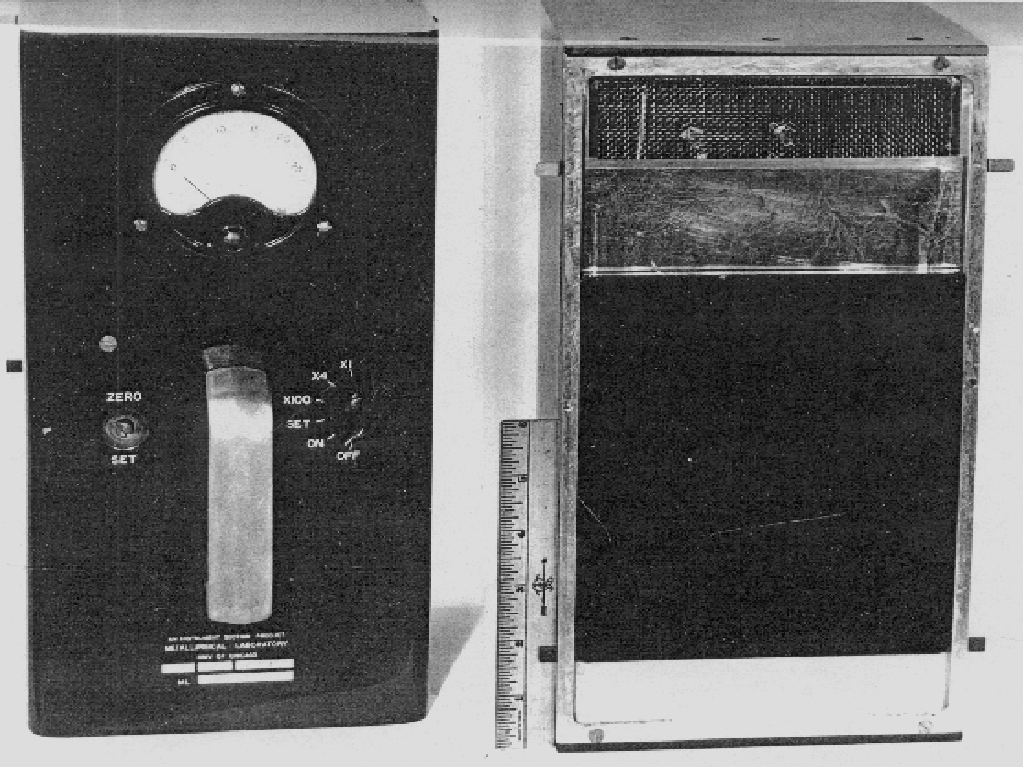
Zeus Mark 1, Model 21-A 1945
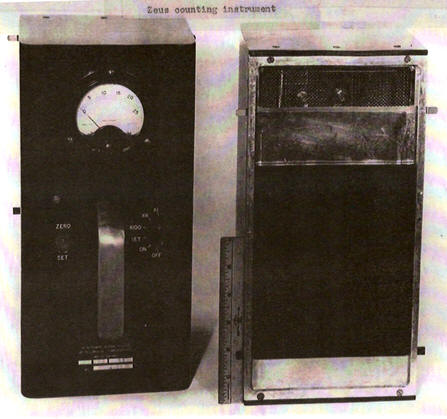
Zeus Mark 1, Model 21-A 1945 (1Picture used with permission of the Stafford Warren Collection)
The University of Chicago developed the New Chemistry Laboratory or "New Chem" to solve the critical problems associated with plutonium chemistry.
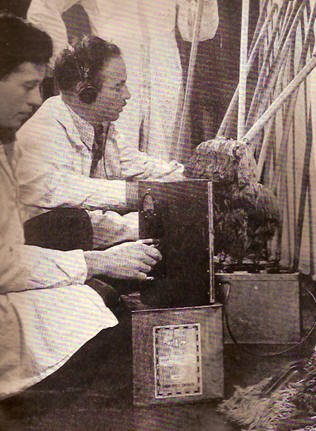
University of Chicago - "New Chem" with Zeus checking mops for radioactive dust 1946
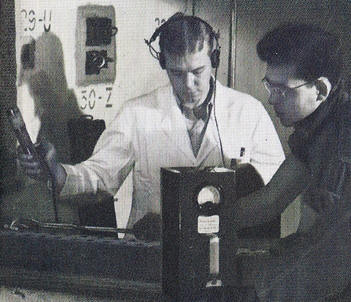
Removing dangerous radioactive material produced in the University of Chicago pile. Zeus Geiger counter in picture, MET Lab 1947 (in Secret by Chrysler Corporation)
The 1952 Zeus was a medium sized instrument for utilizing an ionization chamber with a thin nylon diaphragm forming one side of the chamber. It has a plastic shield for beta discrimination and an aluminum shield for alpha discrimination. It could measure 2 mR/h and 2 R/h.
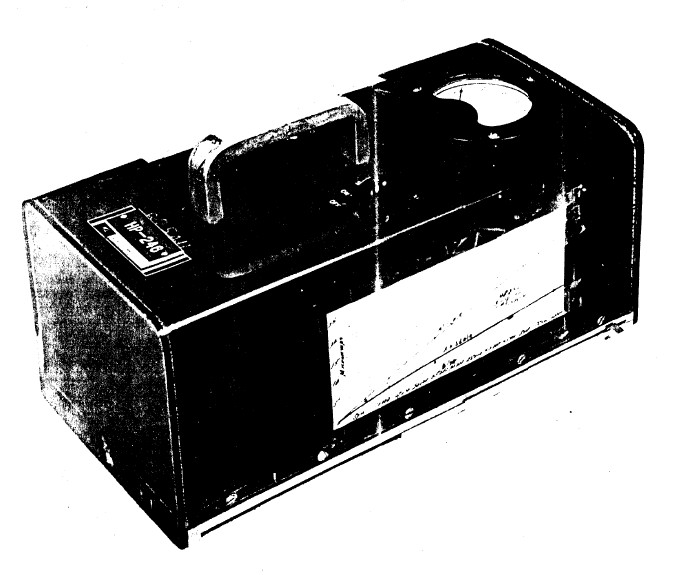
Zeus Meter 1952
The Zeuto (Zuto) is an ion chamber instrument similar to the Zeus but calibrated for alpha only and developed in 1945 as an improvement over the Argonne Sandy. It was designated the Mark 1, Model 2. It was developed by Francis Shonka at the University of Chicago. It had a meter in microamperes and an on-off switch with X1 and X10 settings and could measure from to 50,000 dpm. The unit was 10.5 x 5.5 x 5.5 and weighed 3.5 lbs. The Super Zeuto (Mark 1, Model 10) was developed in 1945. It had a range of 5,000 to 50,000 dpm. The unit was manufactured commercially by Victoreen as the Model 356.
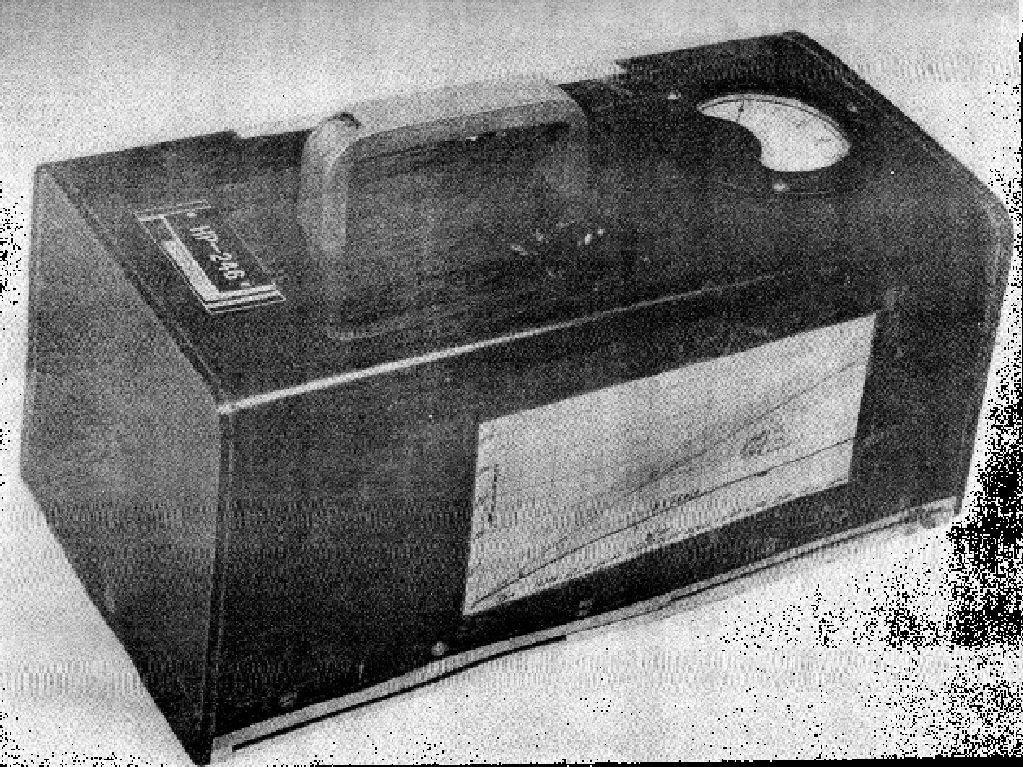
Zeuto 1946
The Zeuto Mark 1, Model 10 Type A was developed in 1946 for measuring alpha contamination on flat surfaces. It is battery operated. The ionization chamber has a window 100 sq cm and is covered with a metal screen and a piece of stretched nylon made electrically conducting. It has a x1 and x10 scales. It is housed in a metal box 10.5 x 5.5 x 5 and weighed 9 lbs.
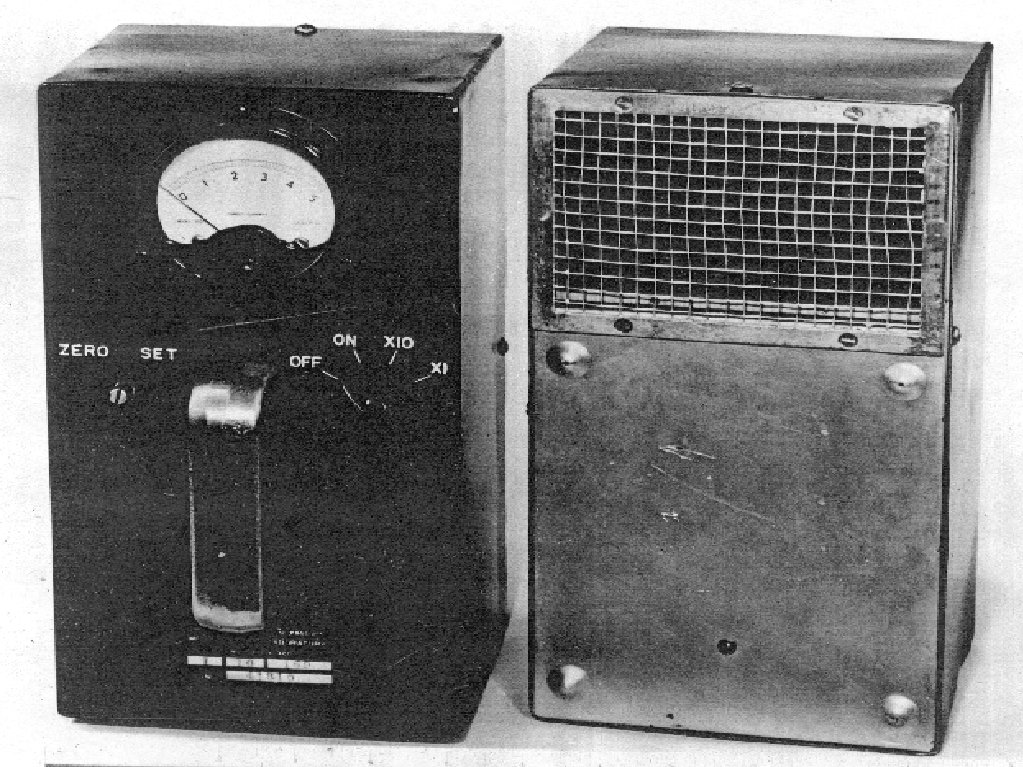
Zeuto Mark 1, Model 10 Type A 1946
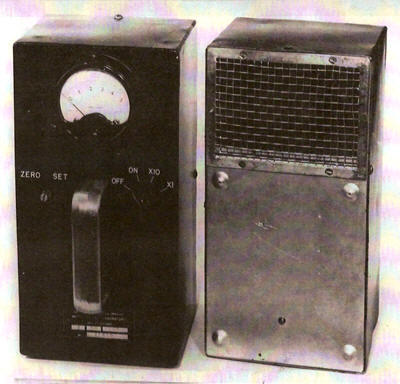
Zeuto Mark 1, Model 10 Type A 1946 (1Picture used with permission of the Stafford Warren Collection)
The Zeuto (Zuto) Alpha Survey Meter dates back to 1943 and developed by W.P. Jesse. It may be the second instrument designed for measuring alphas. It could measure from 6,000-60,000 dpm. The unit was 10.5 x 5.5 x 5.5 and weighed 9-5/8 lbs. The chamber was 1.75 x 3.5 x 5 with a tin window. It was offered as an alternative to the Poppy. It was manufactured commercially by Victoreen as the Model 356 in 1950's. The first alpha meter was thought to be the Pluto. The name Zeuto appears to be a combination of Zeus (another instrument developed by Shonka) and Pluto. The 1952 model has two ranges of 8,000 dpm (X1) and 80,000 dpm (X10).
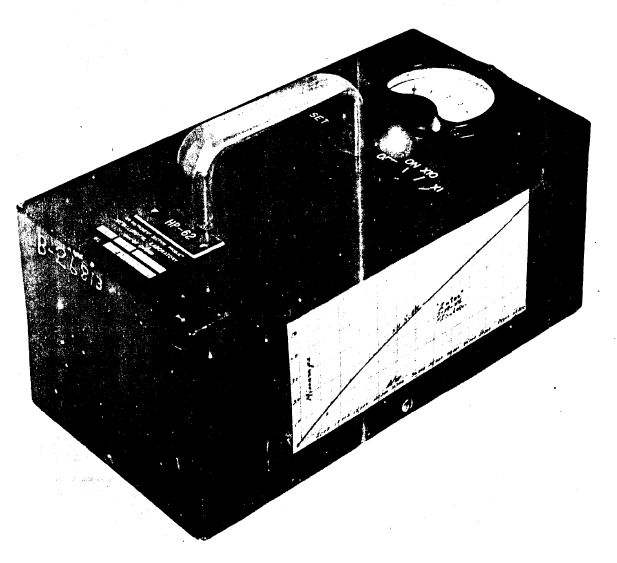
Zeuto Alpha Survey Meter 1952
Air filter with radiation detectors were developed to monitoring for air contamination.
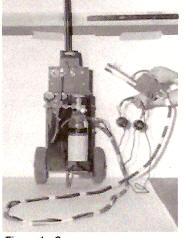
Met Lab Supersnoop early 1940's
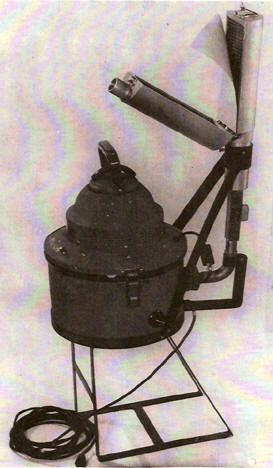
Filter Queen 1950's (1Picture used with permission of the Stafford Warren Collection)
The detector shown in the following photograph is a round cylindrical detector with an eyepiece apparently some type of electroscope. It is a radiation survey meter from 1948. The manufacturer and model are unidentified but appears to be from the Manhattan Project era.
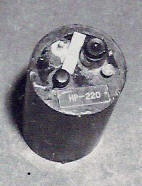
Survey Meter 1948